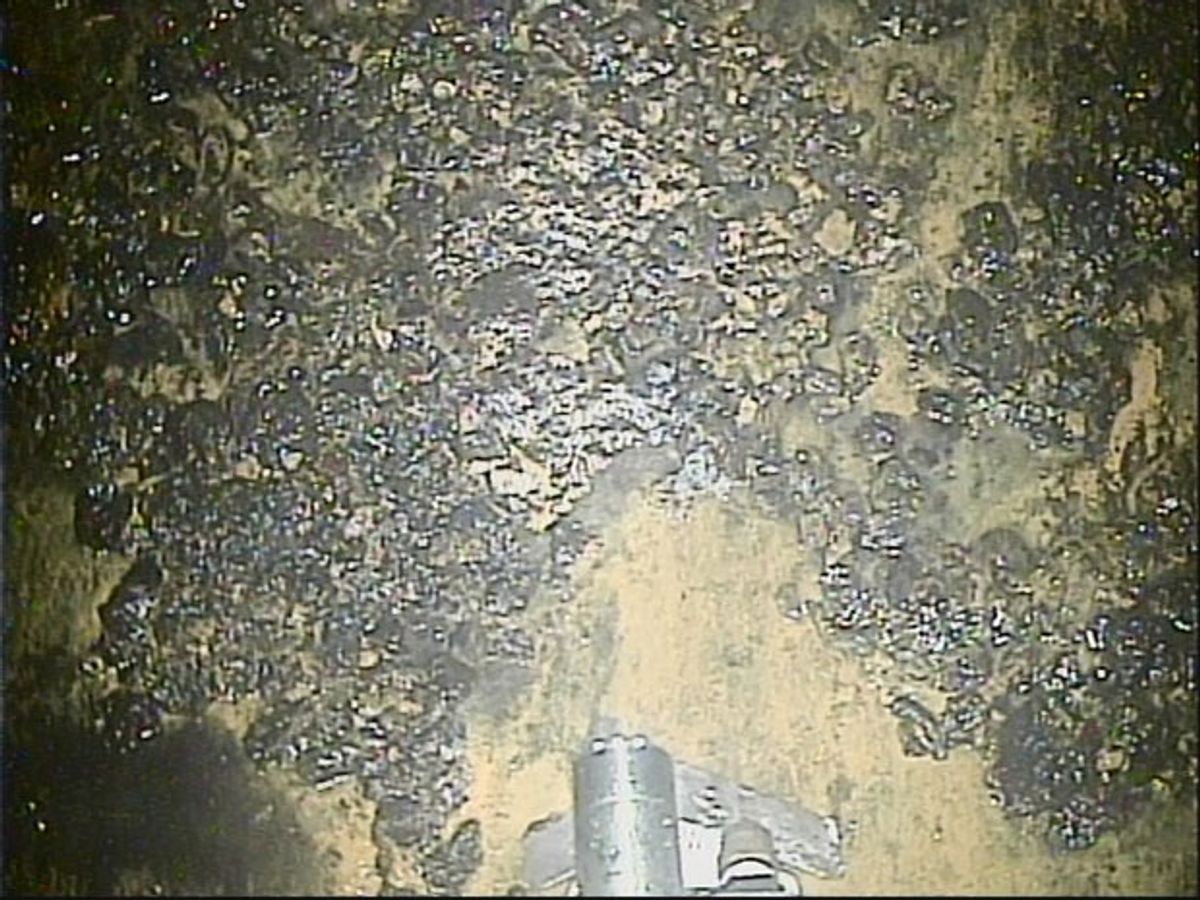With two robot-probe operations apparently encountering increasingly high radiation levels inside the crippled Fukushima Daiichi nuclear plant during the past three weeks, some media reports suggested the radiation count was climbing rapidly. It didn’t help temper that view when plant operator Tokyo Electric Power Company (TEPCO) had to prematurely halt the second operation last Thursday to yank out the robot probe. Radiation had begun to dim the view of the attached cameras, threatening to leave the robot blinded and therefore unable to retrace its steps and escape the rubble.
The first operation, conducted at the end of January, used a remote-controlled robot equipped with a camera attached to a 10.5-meter-long telescopic rod. Captured video and stills showed images of a dark mass of rubble inside the No. 2 reactor’s primary containment vessel near the pedestal that supports the reactor vessel.
Analysis of the images, meant to determine whether the rubble encountered is corium (a mix of melted fuel and other materials), is still ongoing.
A TEPCO official explained that nuclear engineers conducted radiation lab tests prior to the operations taking place. This enabled the engineers to study the images taken in the first probe and estimate the different radiation levels—the highest of which was estimated to be 530 sieverts an hour. An estimate based on images taken during the second probe put the level as high as 650 sieverts an hour. (To put those numbers in context, when you take an abdominal X-ray, you’re exposed to about 4 millisieverts of radiation.)
TEPCO says it is not particularly surprised at these numbers given that its probes were approaching the reactor vessel. “And these are not direct measurements, but are based on the amount of image noise produced,” a company official emphasized. “There is also a plus or minus error margin of 30 percent.”
Will Davis, a former U.S. Navy reactor operator, and a communications consultant to the American Nuclear Society who has followed the Fukushima accident since it began, agrees with that conclusion.
“I don’t think we can realistically make assumptions about rising and lowering radiation levels in these camera-based detection methods yet,” he told IEEE Spectrum. “Not only is the presence of localized [radiation] point-sources possible, but there is also the possibility that streaming of radiation is talking place. In other words, we cannot say that all of the radiation in the containment vessel is coming from one unified lump of damaged fuel in the reactor vessel, and perhaps from a second unified lump sitting under it.”
Davis added that it is only to be expected that the closer the robot probes get to the damaged reactor, the higher the dose rates will be. “This has been expected since the beginning. And the high recent readings—even with the chance of up to 30 percent error—only confirms what experts already knew.”
He pointed out that comparably high radiation levels had been recorded in the aftermath of the Three Mile Island and Chernobyl nuclear accidents.
TEPCO sent in the two robot probes to pave the way for a third operation planned for later this month. This third probe will use a remotely controlled Scorpion robot equipped with a camera, a dosimeter, and a temperature gauge.
By contrast, the main purpose of the second probe was to remove sediment. The robot was outfitted with a water cannon and a scraper tool, as well as three cameras. The hope was to blast a path for the Scorpion, which cannot easily maneuver over uneven surfaces.
Despite the operation being halted early due to the impact of radiation, the company official said no further preparatory probes were planned.
The official added that the information gleaned so far was not regarded as a negative, but rather as an aid in helping the engineers who are conducting these operations. “They are combining and analyzing everything right now, and this will help them determine whether to use the Scorpion or not, and what the next best step is to be.”
The American Nuclear Society’s Davis noted that just getting through the approach and planning stages that will precede the removal of the damaged nuclear fuel inside the reactor vessels and the primary containment vessels “is going to take a very long time, probably many, many years.”
But he also pointed out that while the new estimated radiation levels gleaned from the probes may shock people not following the cleanup closely, “it is important to remember that they are extremely localized and have no impact whatsoever to anyone outside the nuclear plant.”



